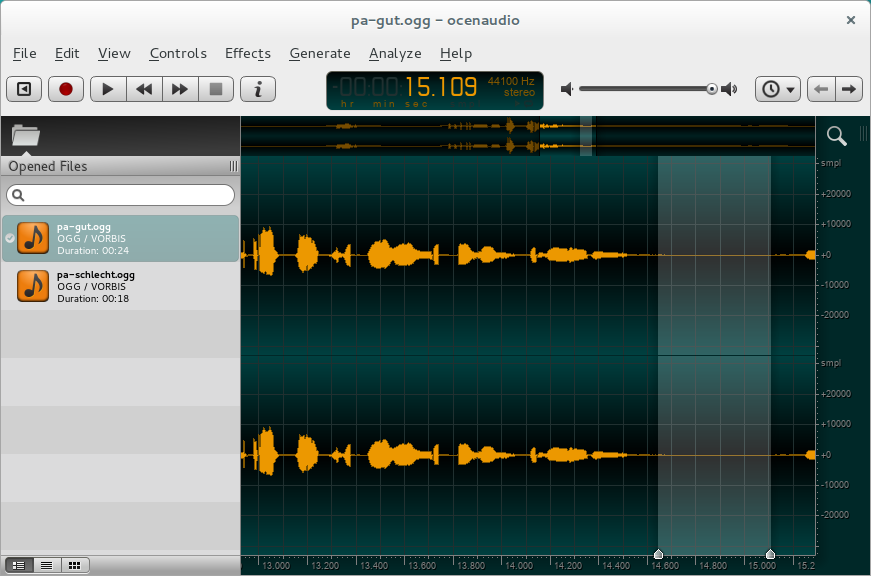

You can also hover over the vertical dB scale and use the mouse wheel to zoom giving you a good view of your noise floor. *You can zoom in to the waveform using the mouse wheel. *A popup gain adjustment slider that allows you to quickly adjust amplitude by selection. *The ability to set markers while recording using Ctrl (Cmd) -K. *A loop toggle icon that leaves it on or off all the time. *Effects can be previewed in real time as the entire track plays, not just 5 or 10 seconds. *The effects are much better than Audacity's, especially Noise Reduction.

*The wave form defaults to fill the screen.
#AUDACITY VS OCENAUDIO 64 BIT#
*It comes in 32 and 64 bit versions for Windows, Mac, and Linux. *Not much configuration to do but select your input and set the sample rate. It's made to record and edit a single track without all the music related fluff that gets in the way. *It is an editor, not a production suite. *As the web site says, it's an "Easy, fast and powerful audio editor" Without going into too much detail, Here's a quick list of the pros and cons I've come up with so far. In my opinion, it does a much better job than Audacity. I've spent the last day playing with Ocenaudio (pronounced Oh-sen-audio). That's why Audacity has always been a favorite it doesn't have all that excess baggage. They usually take a considerable amount of tweaking just to get to the point where you can record and edit a single track. They default to a bunch of tracks, MIDI, effects sends, busses, and assorted other functions that narrators don't need and don't understand.

Most DAWs are made for multi-track music production, not narration. If you want to do a lot of recording for Librivox and/or produce commercial recordings, you might want to look at Studio One. Now that it does, if you only record for Librivox and that only on an occasional basis, there is probably no need to switch from Audacity. When I started with Studio One, Audacity did not have punch and roll. I did pay him to get S1 set up on my computer (basically hiding all the music stuff and streamlining the interface to what I need as well as dialing in some of the settings). Studio One is really a musician's DAW BUT Don Baarns (Red Baarns audio on Youtube and an active Facebook group) has developed many macros/tools/processes to make Studio One work very well for audiobook production.
#AUDACITY VS OCENAUDIO FREE#
There is a free version as well that has good punch and roll so you can test it out and then decide if you want the extra features of Artist. I bought it for maybe $60 but that was several versions ago. I tried Audacity, Ocenaudio, Read to Record, and settled on Studio One. I think every person gets rather attached to the DAW they are most familiar with.


 0 kommentar(er)
0 kommentar(er)
